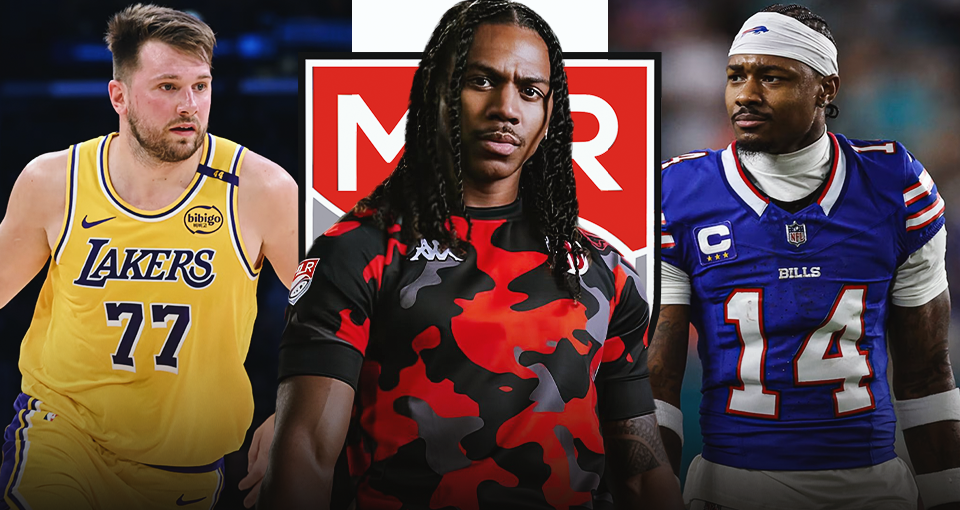

Imagine a sports league where the biggest athletes aren’t basking in with entourages or dominating social media with their larger-than-life persona. Rather, they are quietly grinding, captivating the audience with a quiet, team-first mentality that feels both refreshing and captivating. Welcome to Major League Rugby(MLR), where players’ humility is their superpower, and the marketing strategy revolves around turning that understated excellence into fan obsession.
Watch What’s Trending Now!
What if the secret to growing a sports league isn’t star power—but shared purpose? In the next episode of the EssentiallySports–Think Tank podcast, airing Tuesday at 11:30 AM, host Trey Holder and co-host Kevin Smith—a TCU sports marketing professor and principal at Leverage Sports LLC—sit down with Jericho Groenland, the trailblazing VP of Marketing at Major League Rugby.
The conversation dives into how MLR leans into its “One for all, all for one” ethos—spotlighting team-first players rather than headline-grabbing stars. Groenland shares how this approach isn’t just a budget-friendly necessity—it’s a blueprint for building authentic, lasting fan loyalty in an increasingly commercial sports world.
ADVERTISEMENT
Humble heroes with global appeal
Jericho Groenland’s passion for MLR players is infectious. As a female leader in a male-dominated field, she adds a different layer of insight to her marketing approach. For Groenland, the league’s culture of prioritizing the team’s success over stardom is a triumphant feat. “For me, it’s really cool to see stars who are all for one, one for all,” she said. This is a sharp contrast to the NFL culture, where athletes become a cultural phenomenon.
However, Groenland knows that fandom thrives on heroes. “From a marketing perspective, I need to have those voices. I need to have the people that somebody’s going to be super fan of and want to go to the game really love that player,” she quipped. Thankfully, the Rugby world has no shortage of stars outside the NFL, including her personal favorite, Johnny Sexton, a Rugby Union icon.
ADVERTISEMENT
Why is Sexton her favorite? “Because he plays 10,” the marketing head explains. She describes the fly-half(rugby’s equivalent of a quarterback) as a perfect balance of understatement and popularity. “That’s the kind of role I’ve typically played in my professional life,” she said, drawing parallels to Sexton’s on-field role of driving his team’s attack to her marketing role in MLR. These are the kind of things that make an athlete relatable to the fans who value substance over flesh.
The MLR boasts similar stars like the former Rugby Union fly-half, who can elevate the league’s profile while prioritizing its team-first culture. Ma’a Nonu, the formidable Kiwi and two-time Rugby World Cup champion, brings an immense reputation. The 43-year-old player never lost a World Cup match (16-0) and was nominated for World Rugby Player of the Year after the All Blacks’ win in 2011.
ADVERTISEMENT
“Prior to South Africa just winning this last World Cup, he was one of like two or three active players who have two World Cups or something,” Groenland exclaimed. She highlights Nonu’s recent role in the Los Angeles team’s ownership group and how it instantly elevates the league’s standards. Similarly, you got “Thomas Cubeli down in Miami.” An Argentinian national, who is tearing up the league with his dynamic plays.
In MLR, players become part of the community. Rather than seeing it as a challenge, as the VP of marketing, Groenland sees this as a massive opportunity. Opportunity to craft narratives that can resonate with not only the global rugby fans but also find their place in the American audience hooked on the NFL.
ADVERTISEMENT
The MLR Marketing Model: Building stars without losing the soul
Jericho Groenland’s marketing strategy is a masterclass in elevating stars without compromising MLR’s collection soul. Rather than going through NFL-style celebrity culture, she wants to craft stories that highlight every player’s unique contributions. From Nonu’s legendary career to Cubelli’s relentless energy, for her, the stories are already there. It is just a matter of selling them to the fans without feeling inauthentic or unrealistic.
For them, it is about reliability. Rather than adapting to the NFL’s star culture, MLR athletes are accessible. They take part in local events and engage with the fans on social media. From regularly hosting youth camps to teaching kids rugby fundamentals to serving as youth coaches during the off-season, these athletes do it all.
“Our guys could go to the grocery store and not get mauled. They’re not going to be a Tom Brady in a grocery store kind of thing,” Groenland noted confidently. Proud of the personal connection and loyalty they have been able to foster with the fans.
ADVERTISEMENT
MLR’s marketing playbook, spearheaded by Groenland, is a masterclass for sports leagues looking to stand out in a crowded market. Despite being considered the second fiddle to the NFL, the league has found its own share of fans in the American market. It is not only because of the different gameplay style the league offers, but also because of how its athletes are being presented in the community.
As explored in our EssentiallySports Think Tank podcast, MLR’s approach provides valuable lessons for sports marketers navigating the evolving landscape of fan engagement. The platform actively unites top minds to explore strategy, leadership, and innovation within the sports content industry. This is EssentiallySports Think Tank—Where Sports Meets Smart Content.
ADVERTISEMENT
ADVERTISEMENT
ADVERTISEMENT

